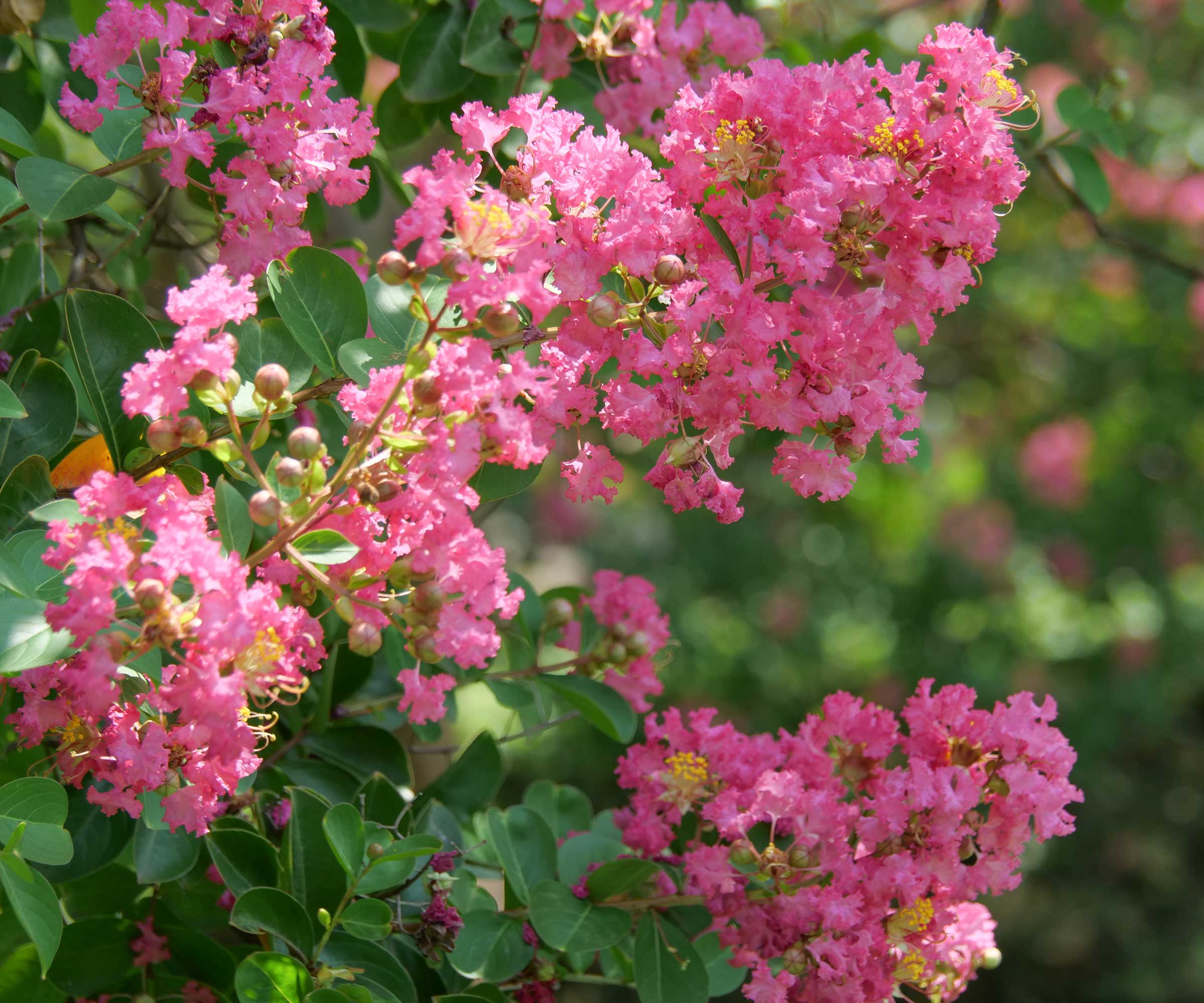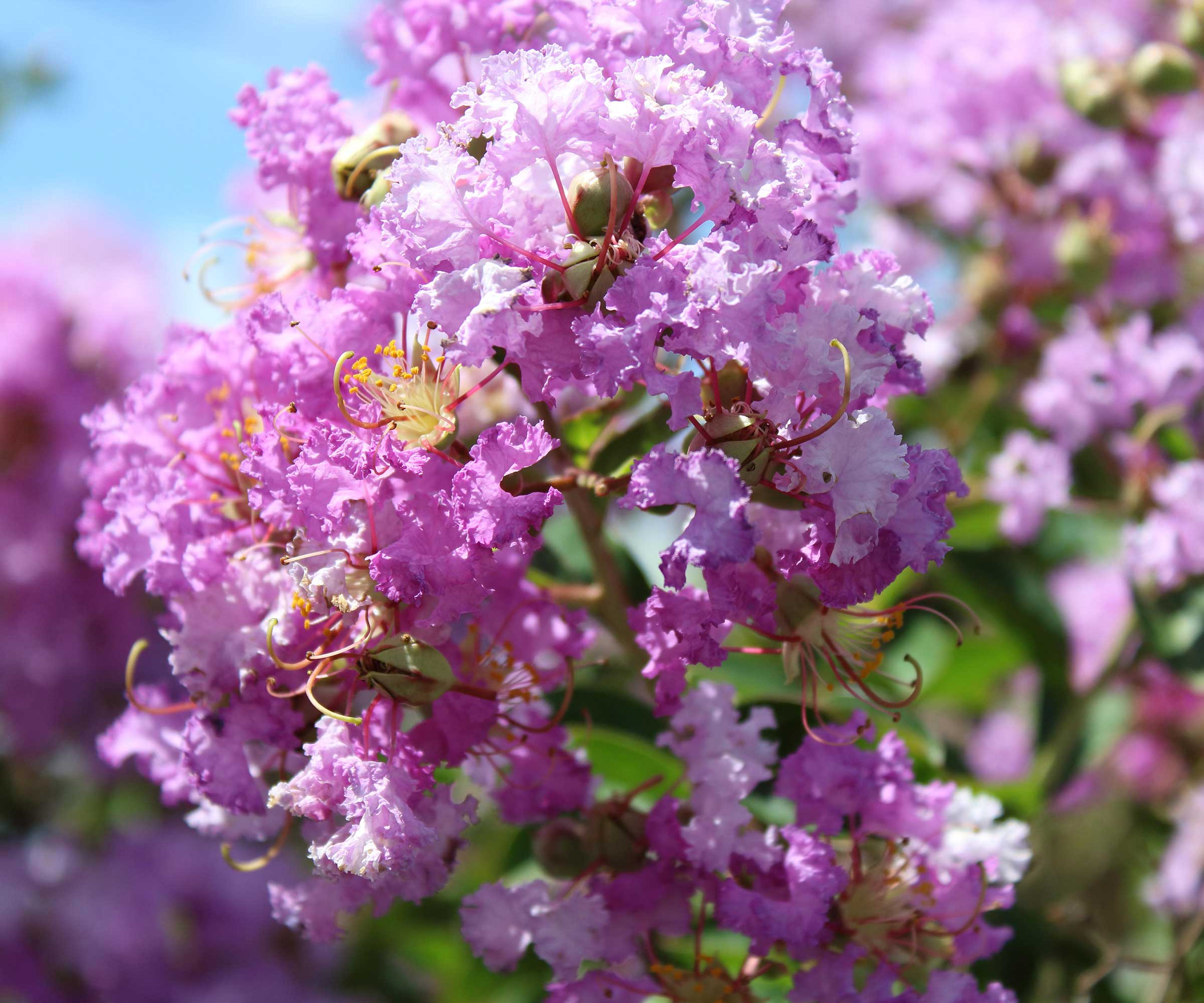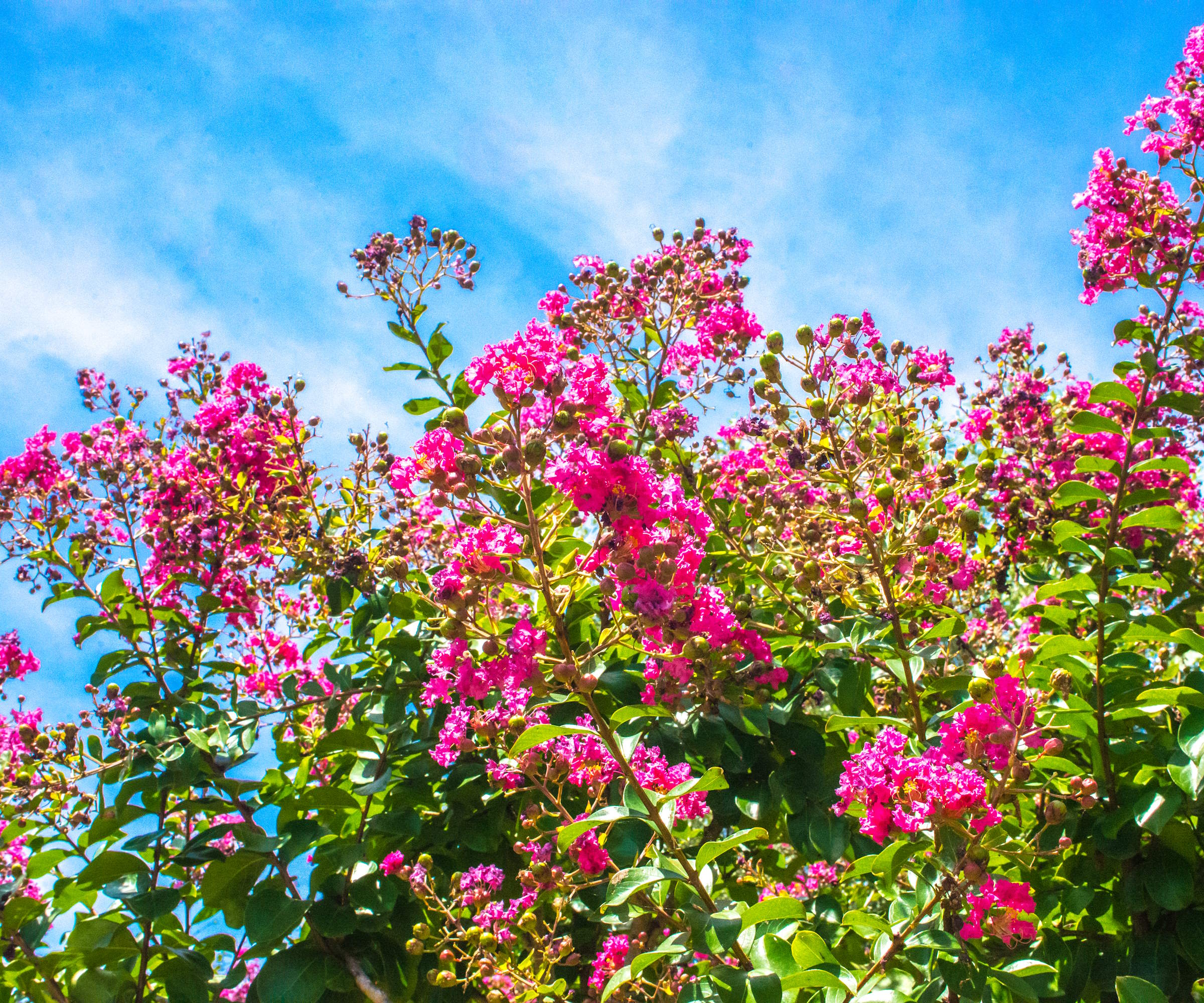
Often considered one of the best flowering shrubs for full sun, crepe myrtle never fails to put on a colorful show in the yard. Come summer, brilliant blooms hum with pollinator activity, with pink, purple or yellow flowers attracting bees and butterflies with their nectar-rich offerings.
These shrubs are common in warm and southerly regions, thriving in US hardiness zone 6 to zone 9, typically seen growing in sunny front yards and borders with their bushy shape and firework-like flowers. When considering how to care for crepe myrtle, these shrubs are relatively easy to grow, preferring plenty of sunshine and free-draining soil.
Crepe myrtle plants are remarkably self-sufficient, doing just fine in the summer without much water or feed. While we might think that applying fertilizer in the growing season will give our plants a boost, it is often not necessary. Here, plant experts share how best - if at all - to fertilize crepe myrtle, to ensure that your plants are not loved to death.

Should you fertilize crepe myrtle
It is possible to over-fertilize plants, and sometimes this can cause considerable damage, burning the roots with excessive amounts of fertilizer when it is not needed. While we might think that feeding will help our plants, many popular shrubs, like crepe myrtle, are self-sufficient.
Is it necessary to fertilize crepe myrtle?

'Crepe myrtle are self-reliant plants that can grow without much need for fertilizer,' says Gail Pabst, gardening expert and Marketing Director for the National Garden Bureau.
'Typically, I would advise that only light fertilization is required, if at all, once your crepe myrtle is established in the yard,' Gail adds. 'Over-fertilizing can damage your shrub, and will cause the plant to produce more leaves and fewer flowers.'
As Gail says, over-fertilizing is a common fertilizing mistake that many gardeners make. Feeding plants excessively can shock the shrub into producing lots of new leafy growth, diverting energy away from bloom production. What's more, too much fertilizer in the soil can chemically burn the roots, causing the plant to show signs of stress, wilt and in the worst case, die.
If you are wondering why is my crepe myrtle not blooming, do not automatically assume that fertilizer will help. Often, the lack of blooms might be a result of poor sunlight or poorly draining soil. As a gardener, I always recommend inspecting your plant and ensuring that the position and conditions are suitable before applying any feed.
So, while you might want to make use of the fertilizer bottle in the shed, it is often best to leave your crepe myrtle to fend for itself. The only time you might want to use fertilizer is for plants that are young or grown in pots. For these plants, it can be a good idea to provide a small amount of fertilizer.
How and when to fertilize crepe myrtle

If your crepe myrtle was planted in the last two years, or grown in a container, you can apply a small amount of fertilizer during the growing season. 'If you want to fertilize crepe myrtle, it is best to apply a balanced fertilizer like 10-10-10 in early spring before the new growth emerges,' Gail advises. Organic fertilizers are available from Walmart.
Plant fertilizer numbers can seem confusing, but, as Gail says, using a balanced 10-10-10 solution, with equal parts nitrogen, potassium and phosphorus, is recommended.
'If the crepe myrtle is growing in fertile soil, then often, no additional fertilizer is needed,' Gail continues. 'With younger specimens, we often need to be patient while the shrub grows, allowing time for it to establish roots and produce lots of flowers.'
'Do not fertilize crepe myrtle in the late fall,' Gail says, 'as you want to give the crepe myrtle a chance to harden off for the winter. Sticking to springtime is your best bet.'
To improve the quality of your borders, it is a good idea to apply leaf mold in the winter, helping to improve soil structure and feed the soil with plenty of rotting material. Mixing in mulch is also recommended for pot plants too.
So, why not learn how to make plant fertilizer in the form of mulch and leaf mold this year, composting pruned material such as perennial stems, leaves and twigs in a composter? Compact composters are available from Walmart, ideal for smaller yards and gardeners looking to create their own mulch.
This balanced slow-release plant food is ideal for flowers and vegetables in the yard, helping to nourish your plants with all the goodness they need.
FAQs
Should I fertilize crepe myrtles that are grown in pots?
As with any plants grown in pots and containers, it is a good idea to use fertilizer. These plants cannot access water or nutrients in the ground, so rely on you more so than plants grown in borders. I recommend feeding any crepe myrtle plants grown in pots in the springtime, using a slow-release feed suitable for flowering shrubs. Feeding at this time should provide all your plant needs for the growing season.
While we might think that feeding our beloved plants will always generate extra growth and flowers, it is often not necessary. If your crepe myrtle is growing well and blooming happily, leave the fertilizer in the garden shed. For more information on feeding your plants this year, see our guide on how to fertilize bougainvillea, for a bounty of blooms this summer.







